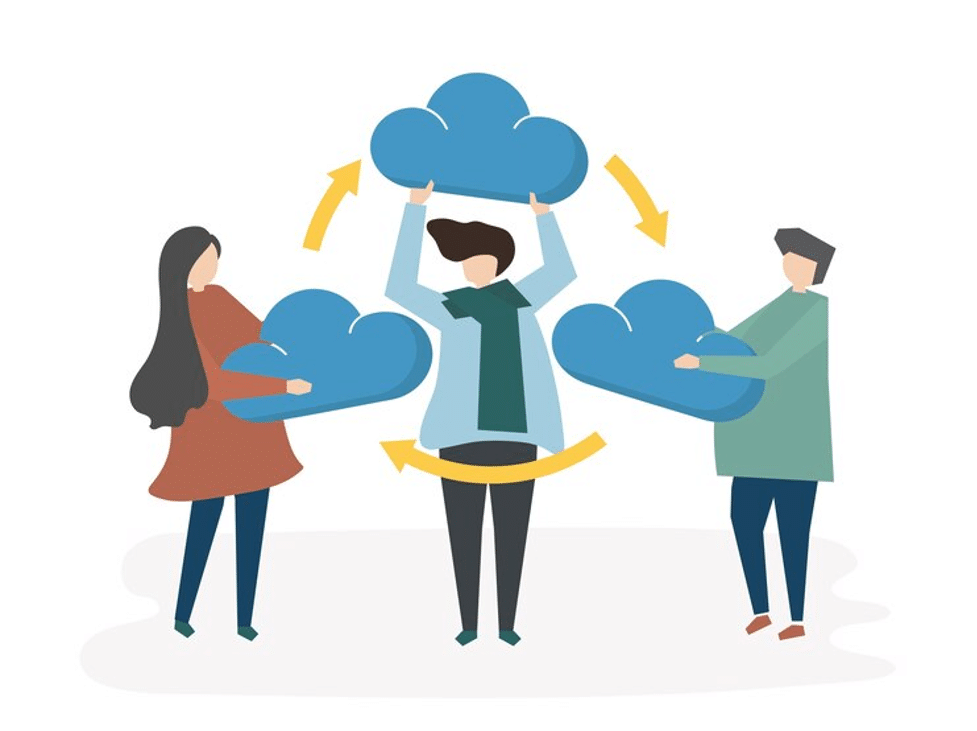As the world continues to become more and more technology-driven, the rite of passage of cloud modernization is the fate for businesses today. Picture yourself on the edge of an infinite blank space, a steep way down between opportunities and danger.
Delving into this new world promises better efficiency, reduced cost, and agility.
What if your legacy systems fail?
What if data security breaches occur?
Today, these questions resonate with many organizations as they grapple with modernization journeys.
Cloud transformation is not just a technological shift but a transformational change that enables new ways for organizations to operate. Migrating legacy applications and infrastructure to cloud-native solutions is what it does.
Companies can use the latest and advanced technologies to improve their performance. With the wide-ranging potential benefits — from greater scalability to reduced operational cost — the challenges are not unique. Here are six common ones.
1. Legacy System Compatibility

Legacy systems are integral to an organization’s operations and support critical business functions. However, the trade-offs of their architectural limitations entail constrained scalability, flexibility, and innovation.
A company that relies on a monolithic application may not be able to integrate with modern cloud services based on microservices architecture. And this lack of compatibility can drive up operational costs and slow your ability to react.
With 33.4% of IT leaders planning to migrate, here’s how they can tackle this challenge:
Adopting a Hybrid Cloud Approach
An organization can gradually modernize legacy systems through a hybrid cloud approach. It also helps businesses move less critical workloads to the cloud while keeping essential legacy applications on-premise. A minimal disruption and safety net approach helps smooth the transition.
Engaging Infrastructure Management Services
Working with infrastructure management services to streamline the transition is possible. Hexaware’s services range from assessing existing systems to developing migration strategies and integrating the best cloud practices. Their capability in automation and AI-driven solutions can reduce legacy system migration risks.
2. Managing Data Security and Compliance
With the increased number of relationships handling data security in the cloud, shared responsibility makes things even more complex. Companies must know their data protection, compliance, and incident response responsibilities. Besides, industries like healthcare and finance have stringent regulations to adhere to before and after migration.
To safeguard data during migration and ensure compliance:
Implement Encryption Protocols: Data must be encrypted in transit and at rest. This also serves as an essential layer of security to protect critical information from anyone with little power.
Establish Access Controls: Organizations should adopt the best practice of limiting data access to only those with the relevant role within the organization. Role-based access controls (RBAC) are the best way to achieve that.
Continuous Monitoring: It’s vital to regularly monitor your cloud environments to find unusual activity or threats. It can also use advanced security tools such as AI and machine learning to improve detection capabilities and send real-time alerts.
3. Cost Management and Optimization

Cloud modernization can be very costly. Managing those expenses while in the midst of it can prove challenging. Data transfer fees, storage expenses, and other unspecified services are among the usual factors causing cost overruns during a project.
However, organizations tend to underestimate the complexity of managing the costs associated with cloud services. Without proper oversight, resources will be overprovisioned, and lower-performing services will not be optimized.
To effectively manage costs during cloud modernization:
Right-Size Resources: To make sure that organizations are not over-provisioning while also not underutilizing their services, organizations need to reassess resource usage regularly. Right-sizing is adjusting the resource allocations according to actual rather than anticipated needs.
Utilize Automation Tools: Scalable automation for services can vastly decrease costs. Automation tools allow organizations to adjust resources dynamically per demand, paying only for what they use.
4. Skill Gaps and Talent Shortage
The technology industry has accelerated because it is a person-rich space in the cloud. Yet, it can be a stumbling block to modernizing efforts. It requires experience in these areas. Organizations that struggle with identifying critical roles neither benefit from progress nor suffer from a complete lack of progress.
To bridge this talent gap:
Invest in Staff Training: A cloud technologies training program should top the organizations’ priority list to upgrade their staff. This employer retention strategy creates internal expertise around specific business needs alongside employee insurance.
Leverage Managed Services: With this, an organization doesn’t have to invest in hiring enough specialist skills – you can leverage expertise instead. Hexaware offers complete infrastructure management services, from planning for migration to continued support, along with the involvement of internal teams in core business functions.
5. Ensuring Business Continuity During Migration
Business continuity requires you to minimize downtime during migration. During such a transformative process, no organization wants to face lost revenue and damaged customer relationships from disruptions.
Migrating systems without hampering day-to-day operations requires careful planning. During this transition period, businesses often worry about how long they will be offline or how customer interactions will be affected.
Maintain business continuity by following these steps:
Phased Migration Strategies: With phased migration, an organization can move an application over time instead of all at once. The approach minimizes disruption by preserving critical applications to less critical ones during the transition.
Utilizing Backup Systems: Organizations must have backup systems for operations if primary systems suffer downtime during migration efforts. This redundancy ensures that customers will have essential services when they need them.
6. Vendor Lock-In

Cloud adoption is a matter of becoming locked into services and pricing models of a single provider, or vendor lock-in, as we call it. This dependency can create flexibility that hinders us from growing in the future as the market dynamics change. The vendor lock-in issue occurs when you can’t switch providers without paying exorbitant fees.
To mitigate this risk:
Adopt a Multi-Cloud Strategy: The multi-cloud approach allows businesses to spread their workloads across multiple providers instead of a single vendor. It helps improve flexibility and cuts down vendor lock-in risks.
Utilize Containerization and Open Standards: Containerization technologies allow organizations to create portable applications in different environments, be they public or private clouds, with increased operational agility associated with the deployment options without further being tied to the vendor ecosystem.
Conclusion
Cloud modernization is not easy. However, if you plan well, you can easily overcome these challenges. Businesses that proactively address legacy system compatibility, data security, cost management, skill gaps, business continuity, and vendor lock-in challenges fully realize the cloud’s potential. Renovating an old house takes the same planning and execution as a cloud modernization journey. Embrace this process, and your business will flourish.
